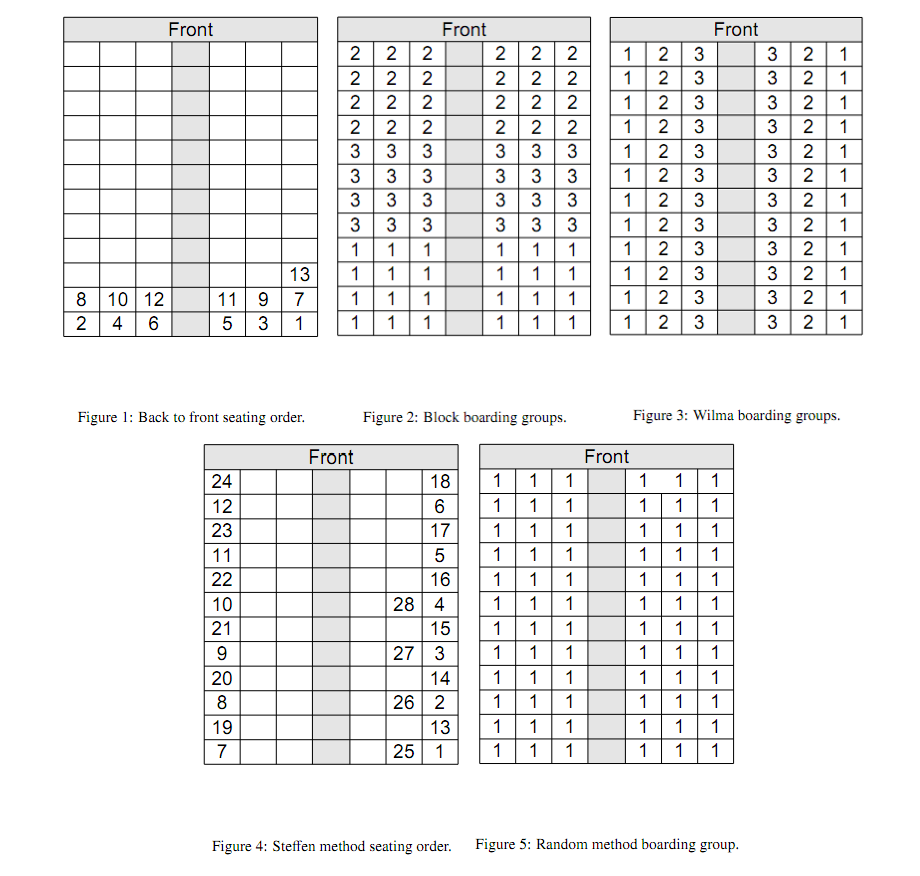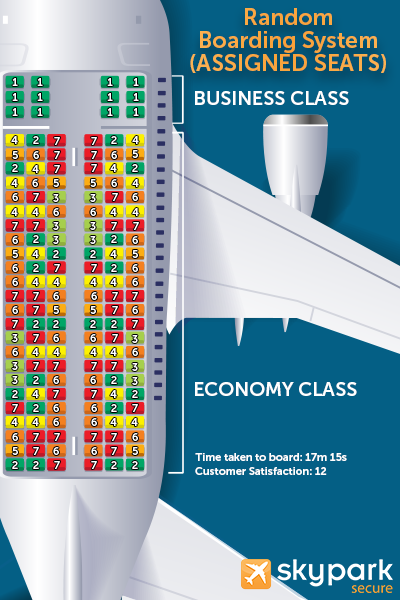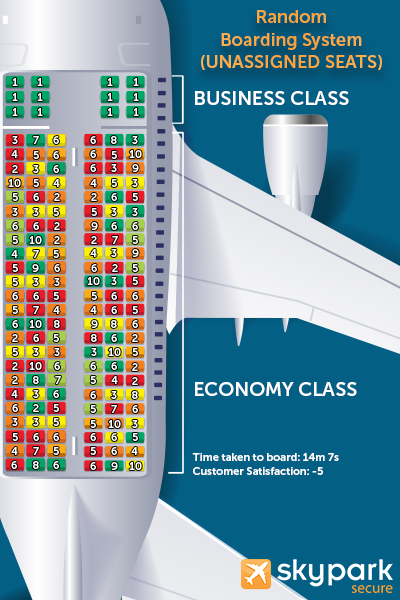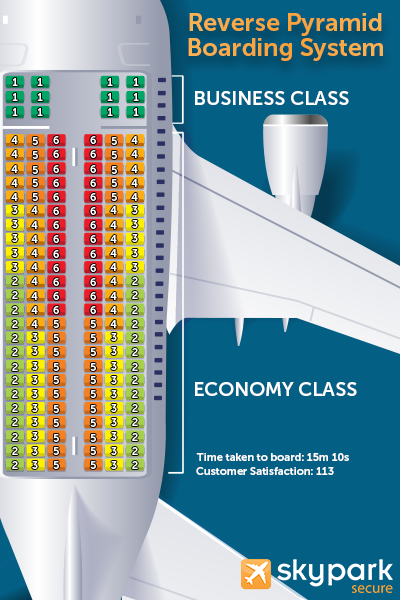WILMA or how to accommodate passengers on an aeroplane
Table of Contents
WILMA or how to accommodate passengers on an aeroplane#
United Airlines plans to improve boarding efficiency by implementing a new process called “WILMA” (window-middle-aisle). This change is set to begin on October 26, with Group 4 passengers boarding first.
Passengers with window seats will be the first to board, followed by those with middle seats and then those with aisle seats. Families and passengers on the same economy reservation will be allowed to board together.
First-class and business-class passengers, as well as pre-boarding groups (including travelers with disabilities, unaccompanied minors, active-duty military, and families with young children), will not see any changes to their boarding procedures.
What’s the point?#
WilMA boarding is when passengers board the plane based on whether they’re sitting at the window seat, the middle seat or the aisle seat. This method claims to increase boarding efficiency since it means there are fewer people standing in the way while others try to get to their seats.
Inplementation of this process may saves an average of two minutes per flight. This is not an insignificant savings. Ground time costs airlines an estimated $100 a minute. A $200 savings per flight, multiplied over the 4,900 daily flights the airline operates, means nearly $1 million in daily savings.
Here’s the breakdown for boarding:
- Pre-boarding for special groups.
- Premium cabins, status holders, and specific seat categories.
- Window seat and exit row passengers.
- NEW: Middle seat passengers.
- Aisle seat passengers.
- Basic economy and those without a specified boarding group.
- Loading an Airliner Is Rocket Science
- Department Fahrzeugtechnik und Flugzeugbau. Optimal Boarding Methods for Airlaine Passengers PDF
List of methods of plane boarding#

Episode of MythBusters from a few years ago, where six methods of plane boarding were tested.
Random With Assigned Seats#

With this boarding method, passengers all had seats assigned. Business class boarded first, and then everyone else was let on at once.
Random Without Assigned Seats#

This method is exactly what it sounds like: let business class passengers board first, and then everyone else sits where they like.
Back-To-Front#

Because it is easier to implement, the most common strategy is back-to-front. The plane’s last row is the first to board in this case. All rows are seated before the front rows get to board. Some airlines simplify back-to-front boarding by calling for blocks of people to board back to front.
Window, Middle, Aisle Boarding (WILMA)#

Business class is boarded first — you may see a pattern emerging here. Then all of the window seats are boarded next, followed by all the middle seats and then all the aisle seats.
Reverse Pyramid#

The Reverse Pyramid combines back-to-front and outside-in approaches. It was developed by America West Airlines and Arizona State University. The first passengers to board are in back window seats, followed by window seats in the center and front. Then middle seats in the same order. Aisle seats at the front are the last passengers to board.
WILMA in Blocks#

A slight variation of the traditional window, middle, aisle system is WILMA in blocks.
This boarding method combines WILMA with back to front boarding, starting with business class in two sections, followed by the window seats to the rear, and then the middle and aisle seats to the rear. We then move onto the window seats of the next section up, followed by the middle and aisle seats of the same section, and so on.
Steffen Boarding#

Astrophysicist Jason Steffen developed the eponymous Steffen boarding strategy in 2008. In Steffen’s strategy( PDF), passengers are called one by one to board. Boarding is still based on outside in, windows to aisles. To avoid crowding, passengers board two rows apart. Though theoretically the most effective method for boarding, it is not practical. Gate agents have more work, and families and couples sitting together may not want to leave someone behind.
Modified Optimal#
Modified optimal boarding divides passengers into four groups and boards them in alternating rows. Passengers in even rows on one side of the plane make up the first group. Next are the passengers on the other side of the plane, sitting in even rows. The process repeats for odd rows.
Bingo Boarding#
In 2019, easyJet and Gatwick Airport trialed a hybrid method called bingo boarding. It was a variation of the reverse pyramid strategy, combining back-to-front and outside-in. It also adopted an element of the Steffens strategy. A gate screen display showed the seat numbers as they were called to board the plane. This boarding strategy resulted in a 10% reduction in boarding time. But their 14-minute average is still higher than the United Airlines WILMA approach.